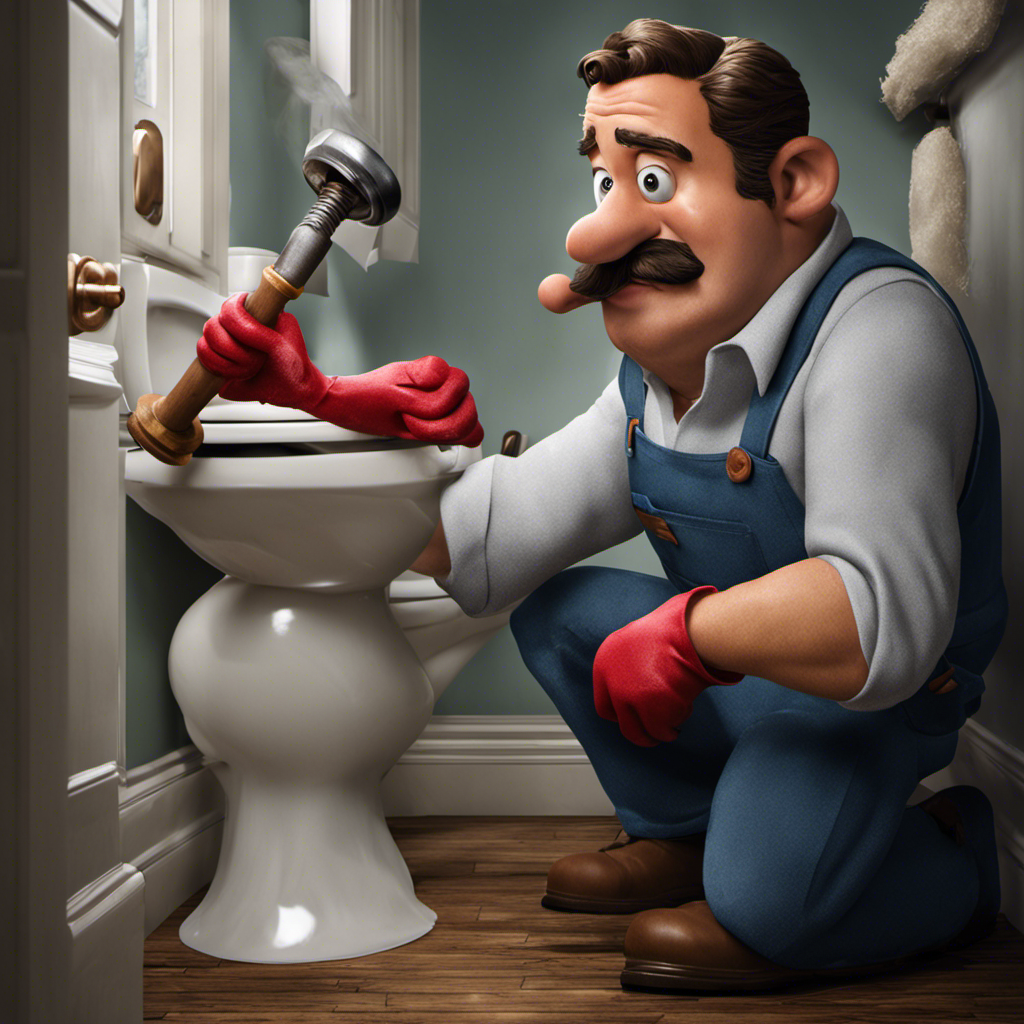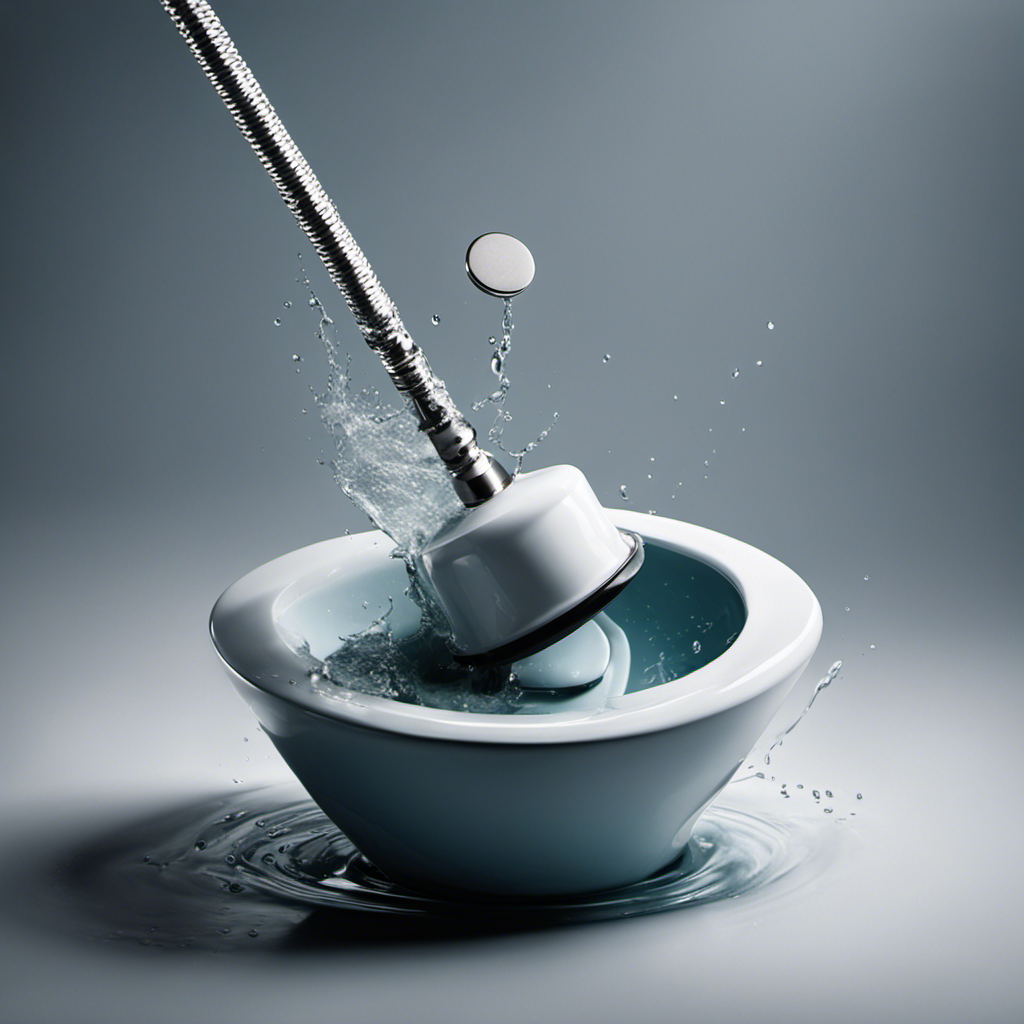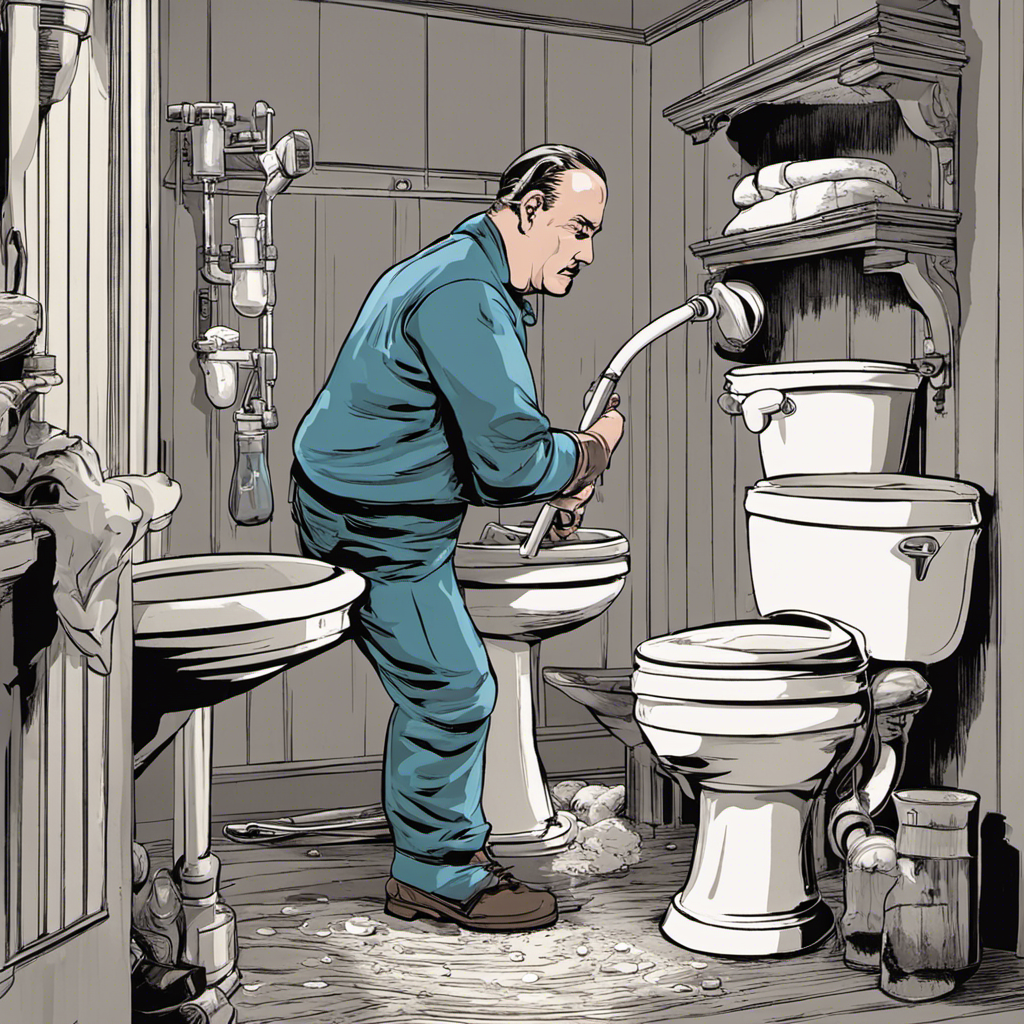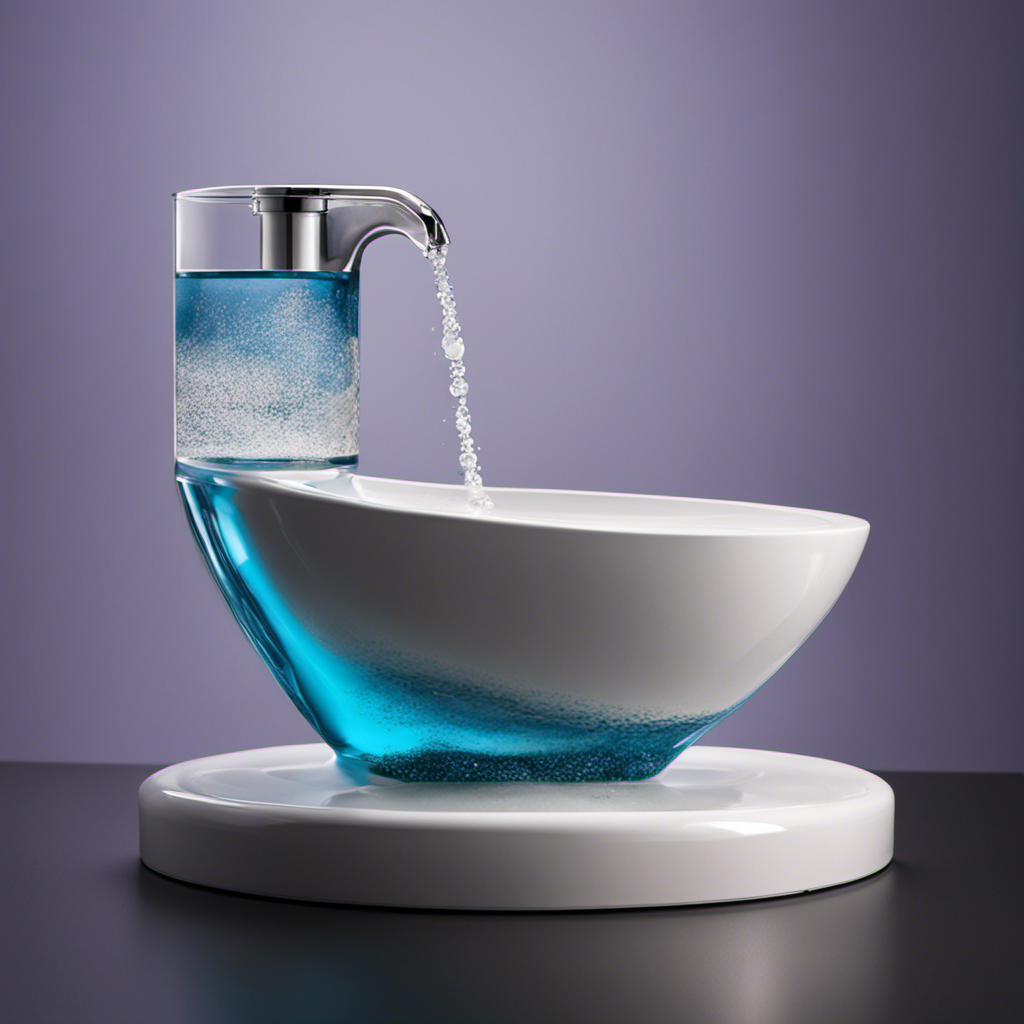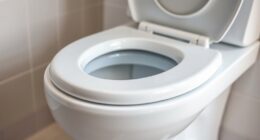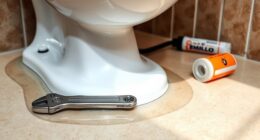Hey there, folks! Ever found yourself knee-deep in a messy situation with a clogged toilet? Fear not, because I’ve got your back.
In this handy guide, I’ll walk you through the nitty-gritty of dealing with that pesky blockage. Armed with a few basic tools and a can-do attitude, you’ll be flushing away your troubles in no time.
So, let’s roll up our sleeves and dive into the world of toilet unclogging, shall we?
Key Takeaways
- It is important to identify the problem before unclogging a toilet, such as checking for water overflow and understanding common causes of clogs.
- The basic tools and supplies needed for unclogging a toilet include a plunger, bucket, and alternatives such as a toilet auger and chemical drain cleaner. It is important to have these necessary tools and supplies on hand.
- The step-by-step unclogging process involves using hot water to break down blockage, plunging to create suction and force out the clog, and using a plumbing snake if the plunger fails.
- Troubleshooting tips for stubborn clogs include using a baking soda and vinegar mixture to break down the clog and prevent future clogging by being mindful of what is flushed down the drain and scheduling regular maintenance check-ups with a professional plumber.
Identifying the Problem
First, check if the water is overflowing before attempting to unclog the toilet. This step is crucial to prevent any further mess or damage.
Common causes of a clogged toilet include excessive toilet paper, foreign objects, or a buildup of waste and debris. Signs and symptoms of a clog may include slow draining, gurgling sounds, or water backing up into the bowl.
To determine if the toilet is clogged, flush it and observe the water level. If the water rises near the rim or overflows, it is definitely clogged.
Once you have identified the problem, it is time to gather the basic tools and supplies needed to unclog the toilet efficiently.
Basic Tools and Supplies Needed
To unclog a toilet, you’ll need a plunger and a bucket. The plunger is a simple and effective tool for clearing clogs in the toilet drain. Its design allows for a strong suction force to dislodge the blockage and restore normal flow. However, if a plunger is not available or if it fails to resolve the issue, there are alternative methods to consider. These include using a toilet auger or a chemical drain cleaner. While the effectiveness of these alternatives may vary, they can be helpful in certain situations. In the table below, I have summarized the pros and cons of each method:
| Method | Pros | Cons |
|---|---|---|
| Plunger | Easy to use and widely available | May not work for severe blockages |
| Toilet Auger | Can reach deeper clogs | Requires some skill to use |
| Chemical Drain Cleaner | Can dissolve certain types of clogs | May be harmful to pipes and the environment |
Now that we have discussed the basic tools and alternatives, let’s move on to the step-by-step unclogging process.
Step-by-Step Unclogging Process
Now you’ll need to gather the necessary supplies for the unclogging process. To maintain your toilet and avoid costly plumber visits, it’s essential to know some DIY plumbing solutions.
For this unclogging process, you will need a toilet plunger, rubber gloves, a bucket, and a plumbing snake.
Start by putting on your rubber gloves for hygiene purposes. Fill the bucket with hot water and pour it into the toilet bowl. The hot water will help break down any blockage.
Next, use the toilet plunger to create suction and force the clog out. If the plunger doesn’t work, you can try using a plumbing snake to manually remove the obstruction. Remember to be gentle to avoid damaging the toilet.
If you’re still experiencing issues, it’s time to move on to troubleshooting tips for stubborn clogs.
Troubleshooting Tips for Stubborn Clogs
If the plunger and snake fail to clear the blockage, you might consider using a mixture of baking soda and vinegar to break down the stubborn clog. This method can be quite effective in unclogging toilets.
To start, gather the tools needed: a box of baking soda, a bottle of vinegar, and a bucket of hot water. First, pour one cup of baking soda into the toilet bowl, making sure it reaches the drain.
Next, slowly pour one cup of vinegar into the bowl. The chemical reaction between the baking soda and vinegar will create a foaming action that helps break down the clog. Allow the mixture to sit for about 30 minutes.
Preventive Measures to Avoid Future Clogging
One way you can prevent future clogs is by being mindful of what you flush down the drain. Regular maintenance and proper waste disposal practices are key to avoiding future plumbing issues.
Firstly, it is important to avoid flushing items that are not meant to be disposed of in the toilet, such as sanitary napkins, baby wipes, or paper towels. These items can easily cause clogs and blockages in the pipes.
Additionally, it is crucial to schedule regular maintenance check-ups with a professional plumber. They can inspect your plumbing system, identify any potential issues, and perform necessary maintenance tasks to keep your drains clear and functioning properly.
Conclusion
In conclusion, dealing with a clogged toilet can be a frustrating and messy situation. However, with the right tools and knowledge, you can easily unclog it and prevent future clogs.
Remember to identify the problem, gather the necessary tools and supplies, and follow the step-by-step unclogging process. If you encounter a stubborn clog, try troubleshooting tips such as using a plunger or a plumbing snake.
By taking preventive measures like avoiding flushing foreign objects, you can save yourself from the hassle of dealing with a clogged toilet in the future.
So don’t panic, just roll up your sleeves and get the job done!
